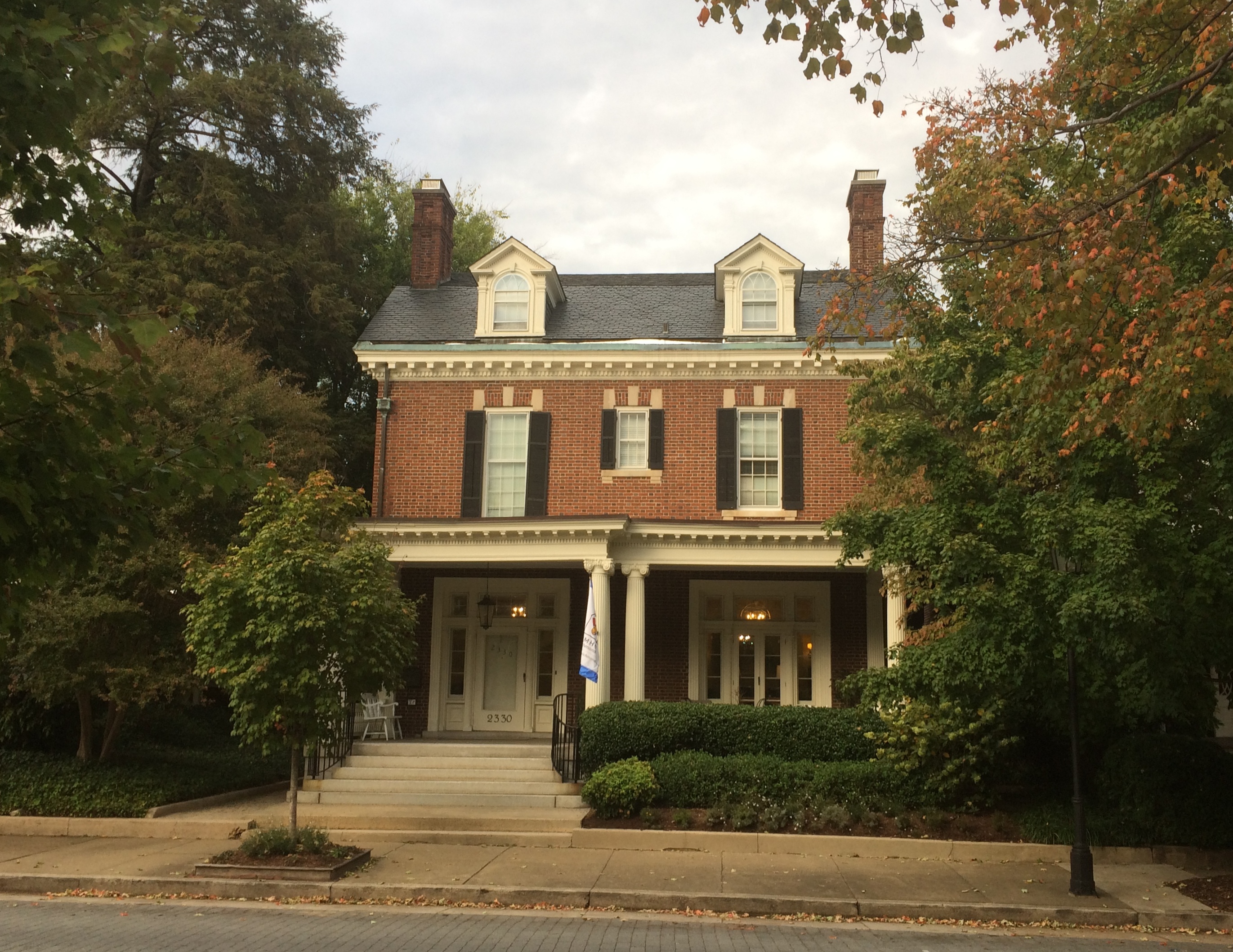Our original plan had been to visit Hollywood Cemetery in Richmond after the American Civil War Museum on the afternoon of October 12. But as so often happens in tourist mode, plans change. It was nearly 5 by the time we left the museum, too late to get to and see the cemetery that day.
But not too late to drive over to Monument Avenue, which I’d considered a secondary destination when planning the trip. Monument Avenue is northwest of downtown, with one terminus not far from the campus of Virginia Commonwealth University, which was alive with students as we drove through.
The avenue struck me as more of a boulevard, at least as that term is used in North America, with its long, wide median.
 Never mind the nomenclature. It’s a grand street with lined with trees and handsome houses. The plaque pictured above says that the Monument Avenue Historic District is a National Historic Landmark, and has been since 1977.
Never mind the nomenclature. It’s a grand street with lined with trees and handsome houses. The plaque pictured above says that the Monument Avenue Historic District is a National Historic Landmark, and has been since 1977.
Picturesque as the avenue is, we came to see some of the monuments while they’re still here. However solid they appear now, they might not be in this place too many more years. A time to keep, and a time to cast away. That adds an extra layer of fascination.
The largest and oldest of the monuments, completed in 1890, depicts Robert E. Lee. It’s positioned in a large traffic circle.
 Interesting that Lee Monument Association commissioned the work from a Frenchman, Antonin Mercié, who later created statues of Lafayette and Francis Scott Key in this country. The 21-foot bronze rests on a 40-foot granite pedestal designed by another Frenchman, architect Paul Pujot. Guess France was the place to go for this kind of work; it was the Belle Époque, after all.
Interesting that Lee Monument Association commissioned the work from a Frenchman, Antonin Mercié, who later created statues of Lafayette and Francis Scott Key in this country. The 21-foot bronze rests on a 40-foot granite pedestal designed by another Frenchman, architect Paul Pujot. Guess France was the place to go for this kind of work; it was the Belle Époque, after all.
On all four sides of the massive plinth are signs of our time.
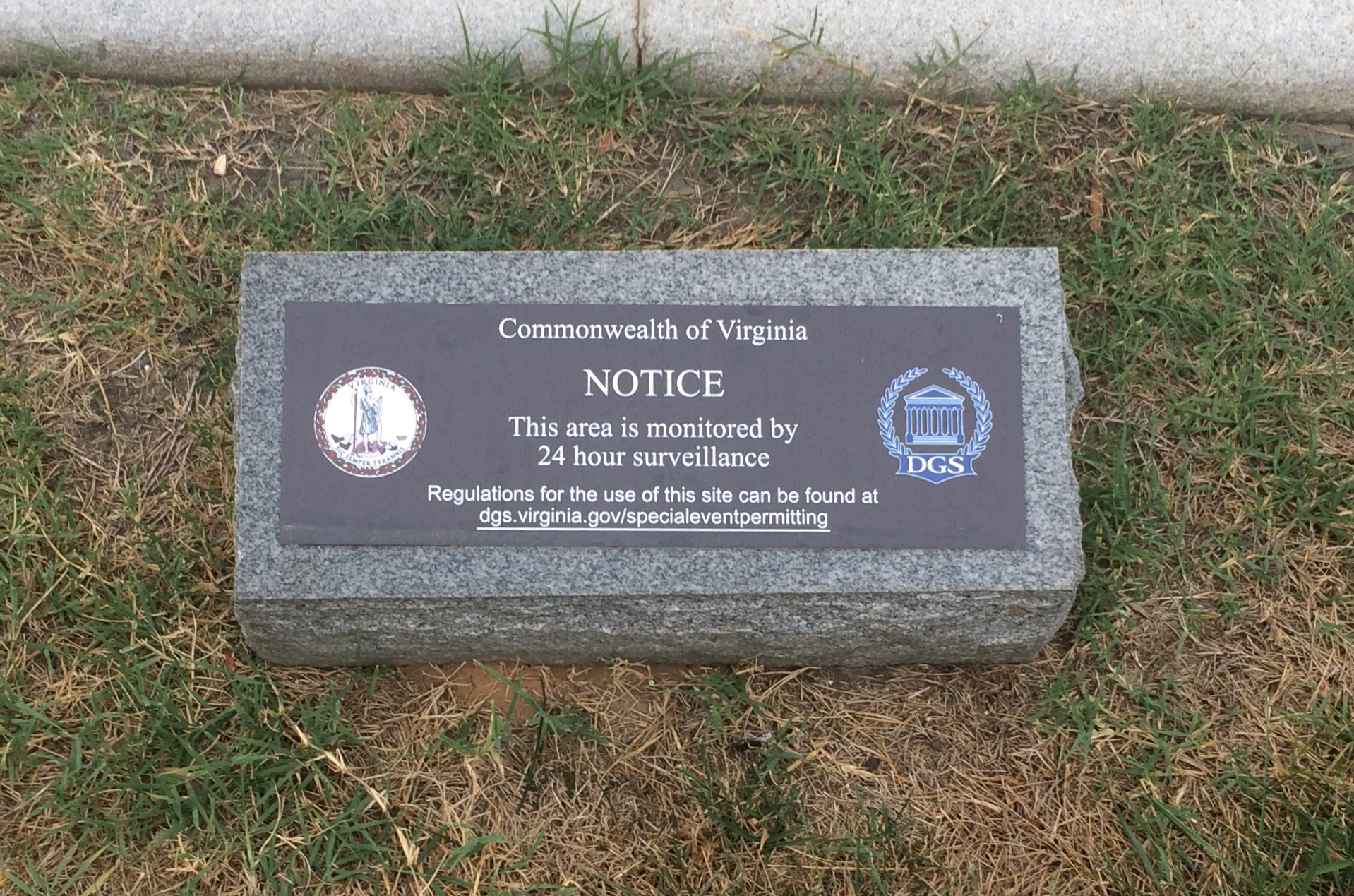 Fortunately, open parallel parking spaces weren’t hard to find on Monument Avenue, so we drove to the northwest a few blocks and parked near another large memorial: Jefferson Davis, created by Richmond sculptor Edward V. Valentine and architect William C. Noland.
Fortunately, open parallel parking spaces weren’t hard to find on Monument Avenue, so we drove to the northwest a few blocks and parked near another large memorial: Jefferson Davis, created by Richmond sculptor Edward V. Valentine and architect William C. Noland.
 To my eye, simply on aesthetic grounds, it isn’t nearly as impressive as Lee’s monument. The general is astride his steed, in a firm pose, perhaps surveying the battlefield. The plinth sports precisely one word: LEE.
To my eye, simply on aesthetic grounds, it isn’t nearly as impressive as Lee’s monument. The general is astride his steed, in a firm pose, perhaps surveying the battlefield. The plinth sports precisely one word: LEE.
By contrast, Davis is standing on a pedestal, arm out, overshadowed by a much taller column topped by an allegory. More columns (13) are behind Davis, symbolizing each state represented in the Confederate Congress. There’s verbiage all over, in English and Latin. It’s a busy bit of business.
Besides being as Lost Cause as a monument can possibly be — Davis’ pedestal says Jefferson Davis/Exponent of/Constitutional Principals/Defender of/the Rights of States — the work is as embarrassingly Victorian as can be, despite being completed in 1907. It was in the works a long time, being delayed by (among other things) the Panic of 1893. I’m not one to reflexively mock Victorians, who invented so much of the world we live in, but sometimes their expressed sentiment is just too damn much.
According to Virginia Places, “the literature created for the statue dedication… reads, ‘Symbolized in the Vindicatrix, which crowns the shaft of the monument… the emblem of Southern womanhood fitly stands, the immortal spirit of her land, shining unquenched within her eyes, and her hand uplifted in an eternal appeal to the God of justice and truth.’ ”
That was enough memorial-spotting for the day, so I turned my attention to the neighborhood. Memorial Avenue features quite a few impressive homes.
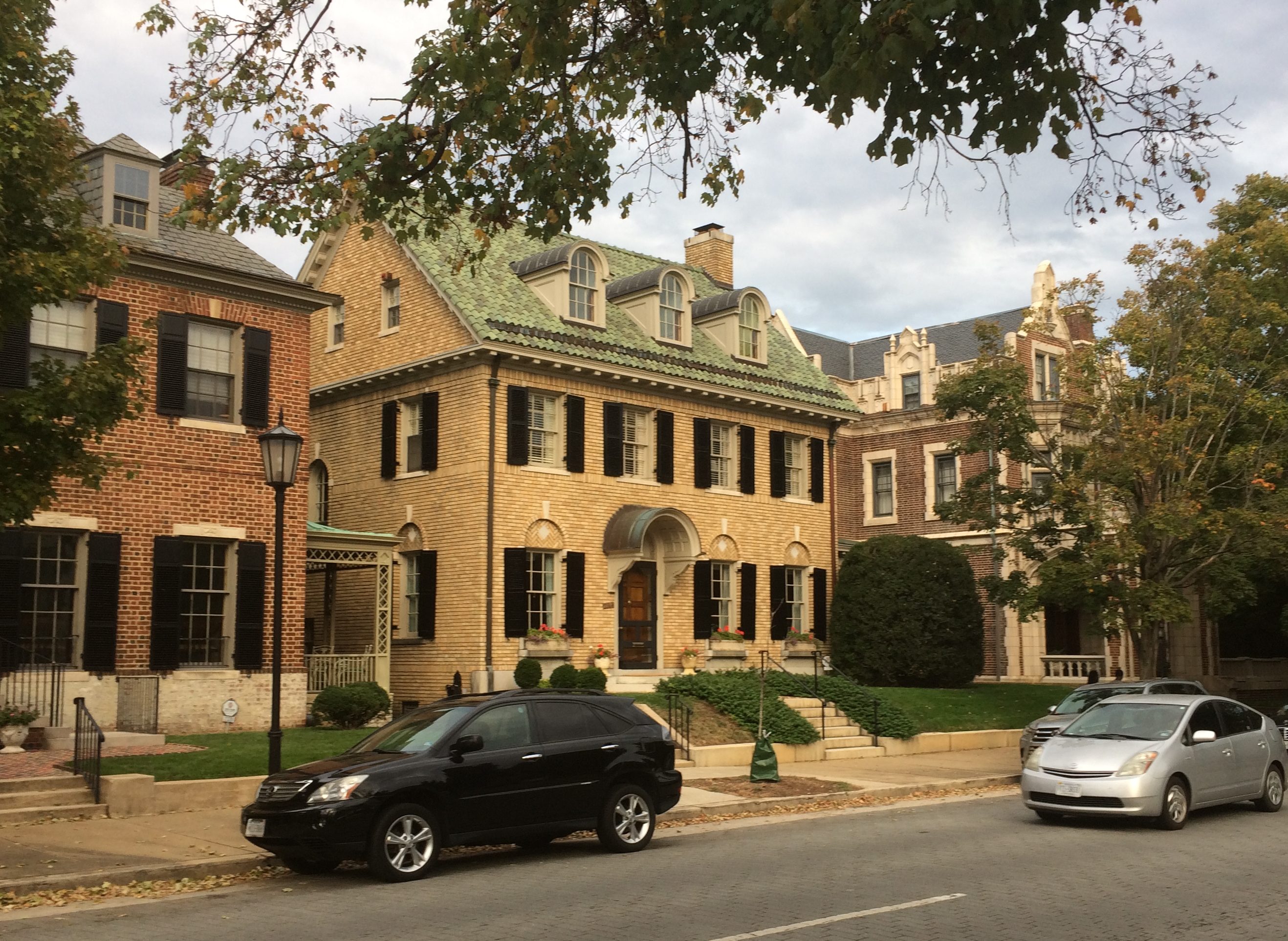
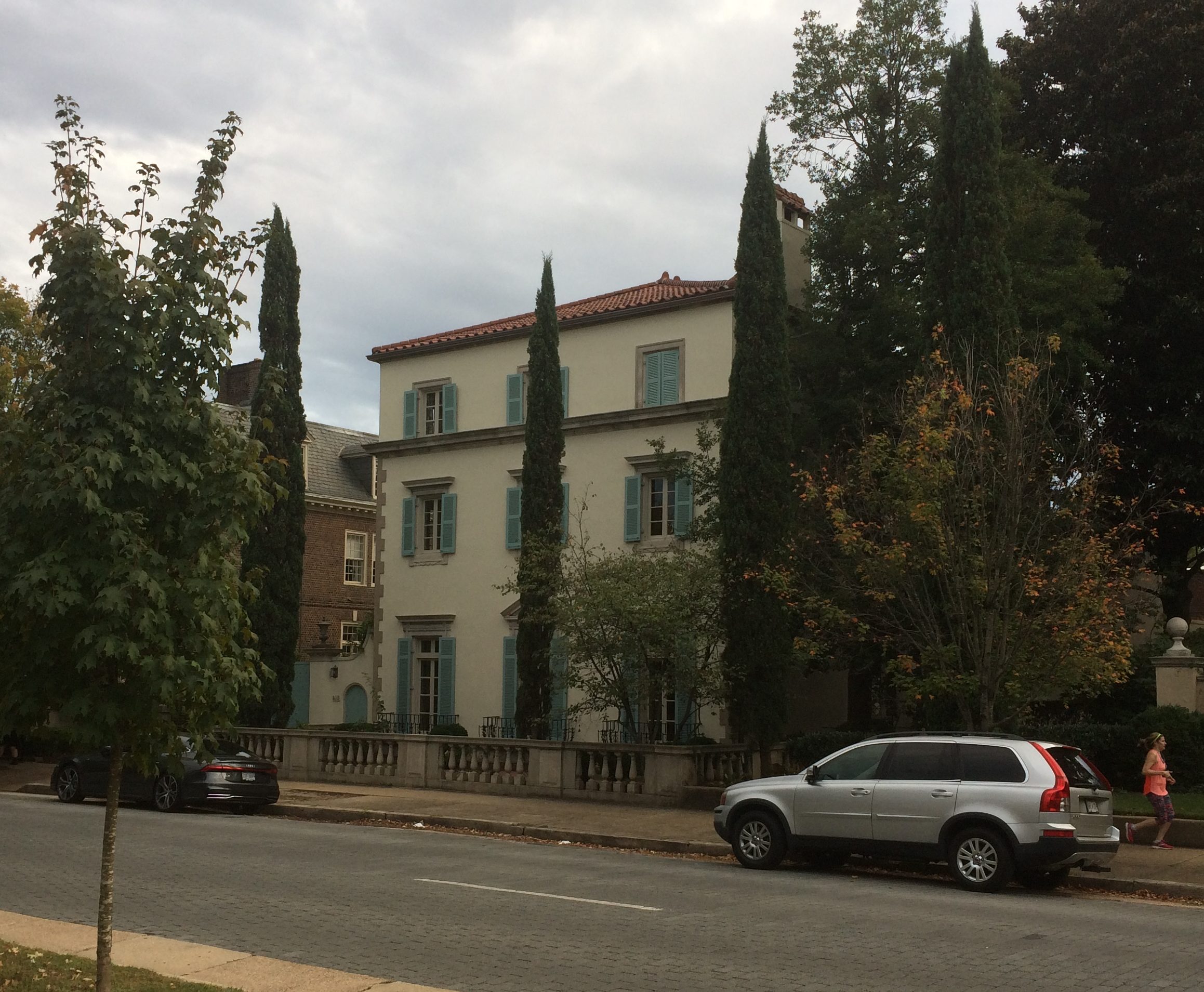 Including a Ronald McDonald House. I wasn’t sure I’d ever seen one of those before.
Including a Ronald McDonald House. I wasn’t sure I’d ever seen one of those before.
As I walked back to the car — Ann had stayed behind when I went to see the Davis memorial — I came across a cannon on the median.
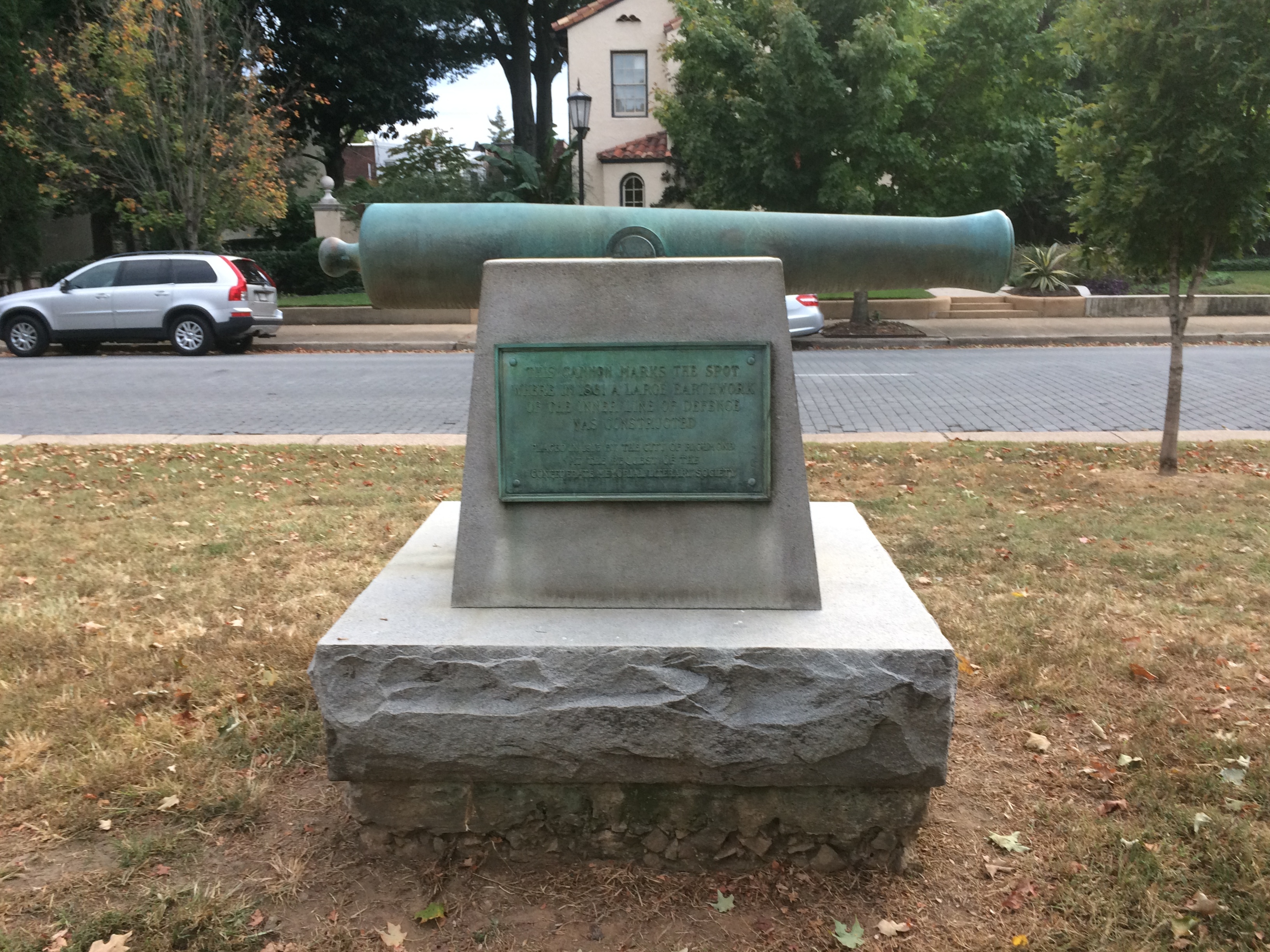 The plaque says: This cannon marks the spot where in 1861, a large earthwork of the inner line of defense was constructed.
The plaque says: This cannon marks the spot where in 1861, a large earthwork of the inner line of defense was constructed.
Small and probably not much noticed. It might well last longer than any of the large memorials.
